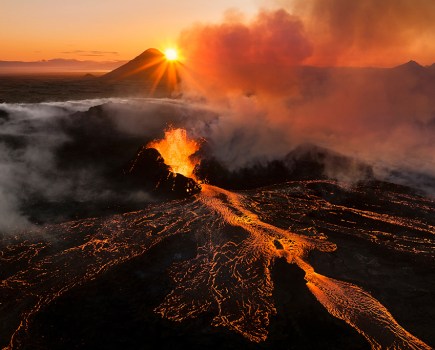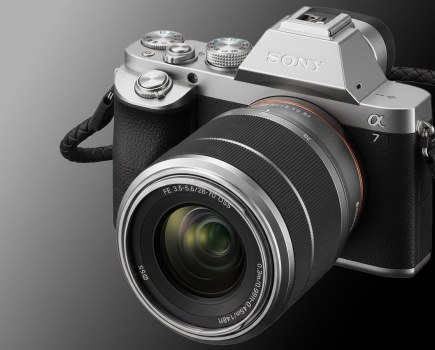The wait is over – Canon has finally added a compact system camera to its EOS range with a new mount and competitive specification

Turning up late to a party isn’t always a bad thing as Canon is hoping to prove in being the last of the big names to enter the compact system camera sector. The belated arrival has allowed the company time to observe the market and hopefully release a product that is stronger for it.
Rather than create a new sub-group, as many other manufacturers have chosen to do, Canon’s CSC joins the ranks of its DSLRs as a fully-fledged EOS camera. The styling of the EOS M, however, appears more in line with the Powershot and IXUS models and it uses a brand new lens mount rather than the current EF/EF-S version featured on other EOS products.

Placed next to the Powershot G1X – the camera originally thought to be the blueprint for the upcoming CSC range – the EOS M is noticeably smaller. The design is much cleaner and curvaceous, with a look more suited to the casual consumer than the dedicated photographer. With 35% fewer buttons than its closest DSLR equivalent, the rear features a button arrangement familiar from IXUS models and a 3in, 1024k-dot touchscreen display that can be used to access further functions.

The EOS labelling makes more sense when you look beneath the surface. The camera features the same 18-million-pixel APS-C sensor and DIGIC 5 processor as in the EOS 650D. When the 650D was first announced its hybrid sensor, which includes phase-detection pixels for improved live view focusing, sparked rumours of imminent CSC development and this has turned out to be true. On the EOS M this provides a 31-point hybrid AF system that has potential to be faster than contrast-only systems.
Though the camera lacks a physical shooting mode dial it does feature manual and priority shooting modes alongside a scene intelligent auto mode, all accessed via the touchscreen. In addition, it features HDR backlight control and a range of creative filters. HD video is available in 1080p with continuous AF and there is a mic input for external devices. Files can be saved in both JPEG and 14-bit raw, and features continuous shooting at 4.3fps.
The decision to use an APS-C-sized sensor is likely to be a welcome relief to many Canon users after the spate of smaller sizes used by its competitors. This should see the camera able to compete with the existing Sony and Samsung models on quality and Canon claim that, despite the lower resolution of the EOS M, it will already give these a run for their money.

With an ISO range of 100-12,800, expandable to 25,600, Canon feels that flash is less of an issue so has not built one in to the body. The new Speedlite 90EX does come included in the box however, with a modest guide number of 9m (ISO 100) and powered by AAA batteries. The hotshoe on the camera will also accept any of the larger Speedlite units from the EOS range.
The new EF-M lens mount was necessary to provide the shorter flange depth of just 18mm and the diameter of the mount measures just 58mm compared to the 65mm diameters of the current EF and EF-S mounts. The new lenses can therefore be smaller and the two models announced appear to be more in proportion with the camera than some APS-C CSC lenses. Existing Canon users can use their EF/EF-S lenses with the addition of the EF-EOS M adapter, which provides full AF and aperture communication.

The camera feels solid and weighty in the hand thanks to the stainless steel and magnesium alloy used in its construction. The lack of dials and buttons won’t suit everyone but with the touchscreen it is easy to access most features. It seems a shame that the screen has not been given a bracket, at least for tilt control and I’m quite surprised there is no ability to attach an electronic viewfinder. The two available lenses also feel solid and well constructed, especially the 18-55mm complete with IS (image stabilisation) and STM (stepping motor technology). To complete the range the EOS M needs access to a nice wideangle zoom (10-20mm) a standard prime (30/31mm) and a good portrait and macro lens (85mm and 60mm), which will hopefully come in time. The adapter for EF/EF-S lenses is likely to be popular especially as part of the larger kit for the existing EOS user but is no sacrifice for a decent range of dedicated EF-M lenses for the new or compact user.
So far I’ve only had chance to view the images on the back of the camera but initial indications look good. It will be interesting to test how the hybrid AF performs against the increasingly fast contrast-only systems from Panasonic and Olympus and how the images compare to those from the 24-million-pixel models from Samsung and Sony, not just in resolution but also distortion, noise and fringing.
The EOS M is due to go on sale in September in a choice of four colours – with black likely to remain most popular – and in two kits. With the 18-55mm lens it has an RRP of £769 and with the 22mm and EF-EOS M adapter for £879.
Video preview








